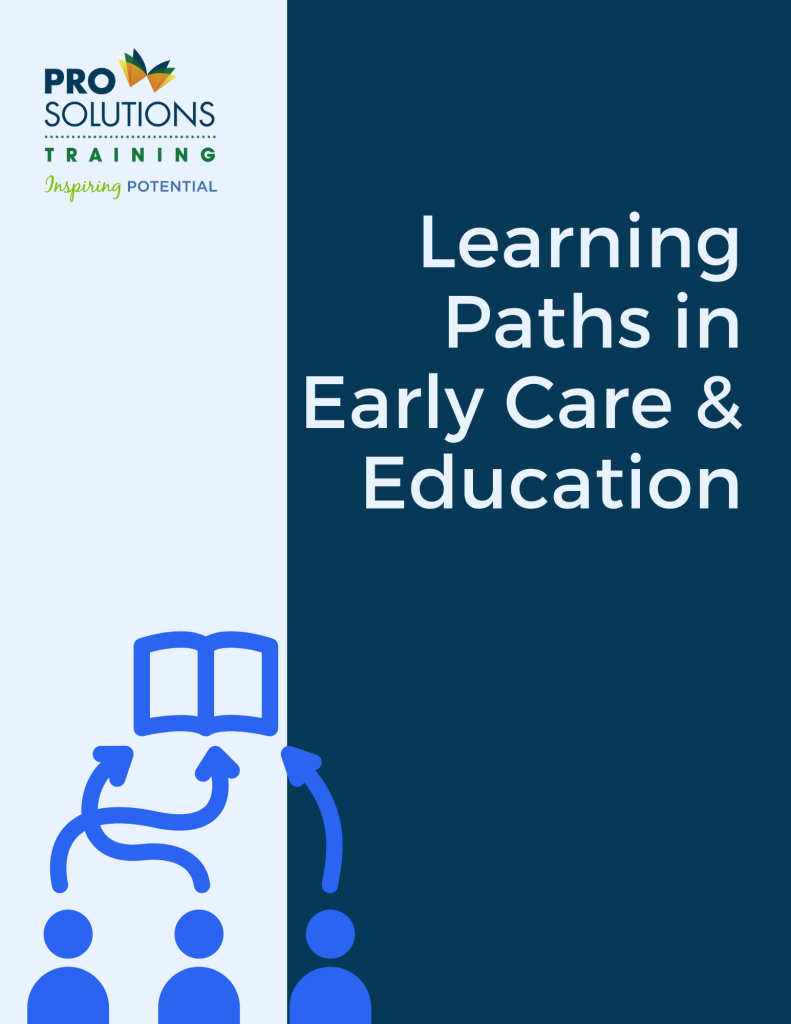Learning Paths in Early Care and Education: A Route to Improved Outcomes

Introduction
According to the U.S. Department of Education, studies have shown a link between classroom quality and children’s cognitive and social development. This is measured by observations, like caregiver responsiveness, and structure, such as teacher training in the early child care setting. Research indicates that higher classroom quality in early childhood learning environments predicts improved child cognitive and social outcomes. This prepares individuals to perform better in school and ultimately in the labor market.
So the question is, how can we increase classroom quality in early childhood learning environments?
Research suggests that among center-based and family-based programs, better teacher education and training forecasted improved quality of the classroom environment. Creating effective learning paths for educators will better allow them to deliver high-quality care to the future’s most precious resource: our children.
In this white paper, we discuss how learning paths can help improve the onboarding, training, and career development opportunities for early education providers.
What is a learning path?
A learning path is a selection of courses linked in a structure allowing learners to progress and master a skill, subject, or program. According to Wikipedia, a “learning pathway is the chosen route taken by a learner through a range of e-learning activities, which allows them to build knowledge progressively.” One of the best parts of learning paths is that they can be adapted depending on goals, needs, and experience levels.
In the early care and education industry, learning paths are helpful for child care professionals to grow their careers or build a better understanding of certain topics like child development, mental health, family engagement, or other important topics.
Learning paths are an excellent way to create routes of information that individuals can follow at their convenience. Learning paths can be developed for a teacher’s level of experience. Similarly, a learning path could be created depending on the age group of children the teacher will be working with.
Instead of repeating the same courses or trying to pack a ton of information into a single course, learning paths allow learners to expand their understanding or expertise at their own pace and timeline.
This is not to say a single one-hour or two-hour course can not be beneficial. There are many instances such as compliance training or health and safety reviews that are valuable as stand-alone courses. Individual courses also allow a preview of a certain topic or subject area before committing to a full learning path.
Learning paths are typically connected to online learning or e-learning, but they could be compared to a full day of training or an academic course syllabus. The key difference is that the individual can complete the courses at their timeline and pace. This may help them be more successful in completing and retaining the information presented.
By giving more access to information and best practices, educators are more likely to understand how to respond to developmental milestones, behavioral challenges, personal health and well-being, and a multitude of other topics.
